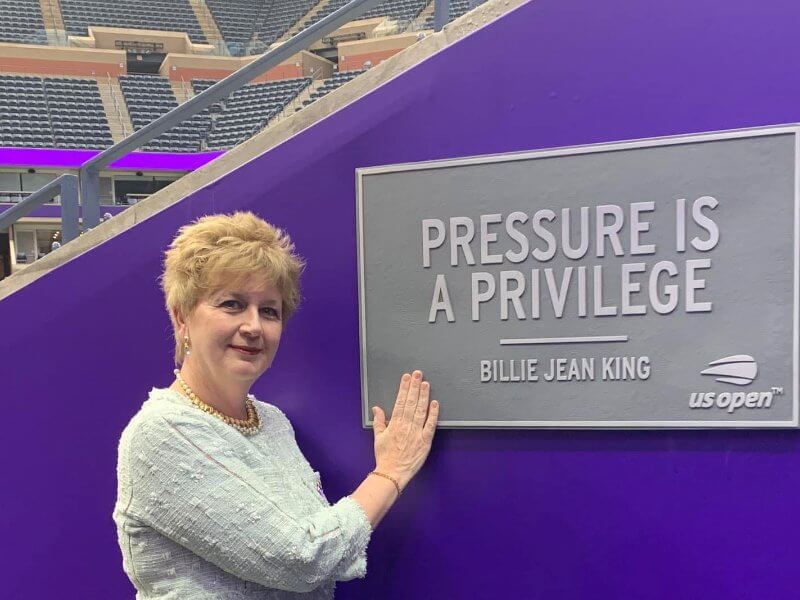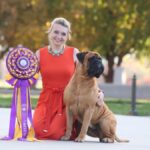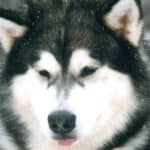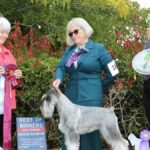Interview with Denise Flaim – 2023 WKC Dog Show Breed Judge
What does it mean to be invited to judge at this year’s historic Westminster Kennel Club Dog Show?
Denise Flaim: Judging at Westminster is a dream assignment. That’s not just because of the show’s high profile and reputation as a world-class event, but also the depth of quality to be found in its rings.
My friend and fellow judge Rafael Malo Alcrudo of Spain says the goal in purebred dogs is to hear the music in a Standard. Anyone can tonelessly recite the words to a song—or a Standard—but judges and breeders are in search of the melody: That is type. And in the context of that metaphor, Westminster is our Carnegie Hall.
Can you share your thoughts on your various Breed assignments? Please be specific.
Denise Flaim: Many of the eight Hound and seven Working breeds I judged at Westminster are a concerted area of interest and focus to me, as I spent years immersed in them in my previous incarnation as the publisher of Sighthound Review and Modern Molosser magazines.
Among the Hounds, the Ibizan Hound entry impressed with an overall quality that matched its quantity. My winner, GCHB Nahala’s Winter Dragon TKN, had the clean-cut silhouette and deerlike elegance so essential in the breed without losing the power of a hunter called for in the Standard. His light, graceful gait was quite pleasing to watch, as was his enthusiastic rapport with his breeder/owner-handler.
Pharaoh Hound GCHS Hallam Desert Phoenix Bakhu’s Max One In A Million is a dog I have judged multiple times at the Group level, but this was the first time I had him in a Breed entry—and a very strong one—making his quality all the more apparent. With a beautifully smooth outline, he was lithe without lapsing into weakness. The maraschino cherry on top was a handsome head with correctly elongated muzzle, chiseled skull, and eyes of the darkest amber.
I was pleased to see both these fine Hounds make the cut in a very competitive Group under Hound expert Eddie Dzuik.
The Azawakh, CH Chalas Amber Sand TKN, was beautifully feminine and quietly correct. A short, powerful loin is fundamental in all Afro-Asian Sighthounds, and she excelled there, along with her truly vertical proportions and resulting open angulation, correctly sloped croup, and pleasing head. Long loins are not the only challenge currently facing the breed: Too many Azawakh achieve their verticality from overdeveloped, high-set withers better suited to a setter; instead, height should come from a lengthening of the long bones, including the scapula and upper arm.
The Basenji, GCHS Klassic’s Who’s Zoomin Who, had the requisite primitiveness of this African breed, tempered with the elegance of a well-bred racehorse. Well up on leg, she won on her square silhouette, pleasingly long neck, and well-set tail.
While the Cirneco dell’Etna obviously shares common ancestors with the Pharaoh Hound, the two breeds differ in more than just size, ear set among them. GCHS Rockin Heart’s Trickster At Highgard had the slenderness required of this primitive Sicilian breed, excelling with his moderate angulation, lean skull, and small, oval, amber eye.
Shown in rock-hard condition, Harrier GCHB Kingsbury Why So Serious FDC DN TKN had an enviably smooth outline and handsome head. His metronomic gait and sturdy build are a necessity for hunting hare in a working pack.
Norwegian Elkhound GCH Vin-Melca’s Joyride had important virtues demanded in this breed—ultra-short loin, excellent length of leg and square outline—giving her the agility necessary for any moose encounter (however unlikely!). A dark, oval eye and dry, wedge-shaped head, with strong underjaw to boot, contributed to her pleasingly keen expression.
Sloughi GCH Itri Ocerico BCAT FITB had the correct balance of robustness and raciness, and appropriate angles fore and aft. His dark, large eye and long skull resulted in a correctly melancholic expression.
Among my Working breeds, the Great Pyrenees GCHS Rivergroves Wonder Dog at Pyrcreek CGC TKN won on his lovely forehand and excellent substance, along with effortless, smooth movement. Ears set at eye level (an important distinction from his higher-set Slavic cousin, the Kuvasz) and rich, dark brown eyes contribute to his elegant expression. I was pleased to see him take a Group 2nd later in the evening under the discerning Paula Nykiel.
Some young Molossers made a strong impression on me. At just over two years old, the Neapolitan Mastiff GCH Shining Hills Hilario has not reached his crest of maturity, but I could not deny his soundness, age-appropriate bone and substance, and lovely head, with abundant but not excessive wrinkle of correctly heavy, stiff quality—no melted ice-cream cones here. He is proof positive that this breed does not have to sacrifice soundness in order to have type.
Another stand-out of similar age was the stunning Dogo Argentino GCH Lexus De Casa De La Bahia. The Dogo Standard asks for a difficult mash-up: a mesomorphic body with a Molossoid head. This bitch delivered both, with a smooth, powerful yet athletic body that came together with precision on the move, and a correctly proportioned head with tight-fitting skin and lips and essential markedly hard expression. I also want to mention my BOS, GCHB Onix Icon Borneo, a substantial male with black-spotted skin visible under his coat. Dogueros say their breed is born white and dies black, and this perfectly acceptable age-related skin darkening should never be mistaken for disqualifying black coat color.
Another breed with similar type-related challenges—achieving a Molosser head atop a muscularly athletic body—is the Cane Corso. As with the Dogo, Corso type often suffers from the drag of its Bulldog-derived ancestors, resulting in wide-set cabriole fronts, high rears, and hammock-like toplines. My BOB winner, GCHG Adibeir Red Carpet Affair, was enviably sound, with a well-angled front assembly and return of upper arm, rock-solid topline, excellent feet (another challenge in this breed) and a strong head that displayed the Corso’s required convergent planes. I was delighted to see him make the cut in a strong Working Group.
GCHB Mount Sinai’s Call Me Maximilian St Amand was a very typical Dogue de Bordeaux who satisfied the tongue-twisting description of a “concave-lined brachycephalic molossoid.” He excelled in head type just as much as he did in soundness with his wide-set eyes, strong and wide muzzle, and prominent chin, all lending to the breed’s desired “sour mug” expression. The overall entry, however, suggested that diminished size is becoming an issue in the breed, along with an unwelcome reversion to Bulldog type seen in rounded rather than trapezoidal heads, excessive wrinkle, and severely undershot mouths.
When judging Boerboel, I look for dogs that in terms of their degree of “bulliness” are midway between the Dogue (which has more Bulldog influence) and Bullmastiff (which has less), as opposed to “houndier” dogs with a more generic appeal. GCH Silverthorne’s Leo Pride of Clemina TKN had the substance and power required of this breed, and was strong in topline—an area where the breed is frequently weak. In its home country of South Africa, the Boerboel has been all but destroyed by the proliferation of historically incorrect black dogs; thanks to the efforts of the American Boerboel Club, the US is one of the few places where this breed continues true to type.
It is probably fitting to end with the Anatolian Shepherd Dog, as that Working breed has distinct hound influences, combining the best of both worlds. CH Timaru Guardian of the North had the ruggedness, bone, and size necessary for a livestock guardian, as well as a classically intelligent-looking head and powerful yet fluid gait. He also had the breed details—slightly arched neck, gradual rise over the loin, and distinct tuck-up—that hint at his long-ago sighthound ancestors.
Now that it’s over, what are your thoughts on the 2023 show year? Any thoughts on the year ahead?
Denise Flaim: I am looking forward to more music!








